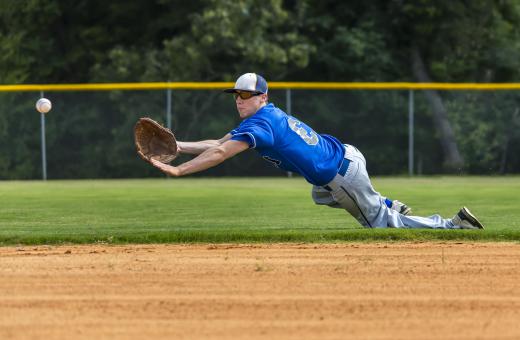A suicide squeeze is a high-risk, high-reward offensive play in baseball. It is a variation of the squeeze play, which occurs when a ball is bunted with a runner on third and less than two outs. In a normal squeeze play, the runner on third waits until contact is made before running home, eliminating most of the risk but increasing the chances that he will be thrown out at the plate. In a suicide squeeze, the runner breaks for home as soon as the pitch is thrown.
This increases the likelihood that the run will score, since the runner will be closer to home by the time the ball is fielded. It also increases the possibility of failure. The play is called a suicide squeeze because, if the batter does not get his bat on the ball, the runner coming from third will be easily tagged out by the catcher.

The success of the suicide squeeze, then, is determined by the batter. If he misses the ball entirely, the runner coming home will be out. If he bunts the ball, but pops it up so it can be caught in the air, he will be out and the runner will have no chance of returning to third before a double play is converted. The ball must be bunted properly for the play to be effective.

If the ball is bunted properly, it is almost impossible to prevent a run from scoring on a suicide squeeze. The play is typically only attempted with a fast runner on third base, and a well-placed bunt will often result in the runner crossing home plate before the ball can even be fielded. The squeeze must be attempted with fewer than two outs, though, because the batter will almost always be thrown out at first.
This play rarely attempted in baseball, if for no other reason than that the situation comes up so infrequently. Typically, if a runner is at third base with fewer than two outs, the batter will be instructed to hit normally because the run could score on a normal ground ball or a deep fly ball, and those plays do not require the risk of a suicide squeeze. However, if the runner on third is especially fast, and if the batter is a weaker hitter who might not hit a fly ball deep enough for the runner to score or who is likely to strike out, the suicide squeeze is more likely to be used.
